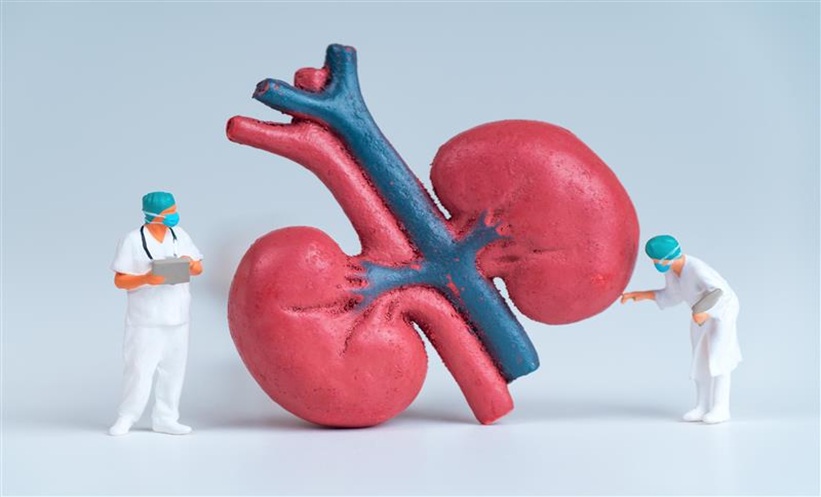Author: Katherine Colvin, Editorial Assistant, EMG-Health
INJURY to renal cells can lead to the development of papillary renal cell carcinoma (RCC) via the kidney’s own repair mechanisms. Leading nephrologist and renal scientist Prof Paola Romagnani, University of Florence and Anna Meyer University Children’s Hospital, Florence, Italy, gave a ‘Gold Plenary’ presentation at the European Renal Association–European Dialysis and Transplant Association (ERA–EDTA) Virtual Congress 2020, outlining the past 15 years of renal science and experimental methods that have shaped understanding of kidney repair mechanisms. The yearly death rate of acute kidney injury (AKI) is greater than the yearly death rates of prostate cancer, breast cancer, heart failure, and diabetes combined. The role of renal progenitor cells in both glomerular and tubular repair improves survival following AKI, however, these repair processes themselves increase patients’ risk of developing papillary RCC.
GLOMERULAR REPAIR MECHANISMS
The repair mechanism of renal glomeruli following AKI has been studied in depth, to reveal a regenerative capability beyond hypertrophy. This regenerative capability is accounted for by the discovery of resident renal cells with the functional properties of stem cells that can undergo self-renewal and differentiation into different nephron epithelial cell types. These stem cell-like cells have been named renal progenitors. Glomerular podocytes, critical components of the glomerular filtration barrier lining the capillaries, are unable to regenerate, likely because of their complex cytoskeleton structure. This structure affords the ability to withstand filtration pressures, but undergoing mitosis and cell division would disrupt this cytoskeleton and compromise function. As a result, podocytes can only undergo DNA synthesis and hypertrophy to increase renal function.
Renal progenitors are capable of differentiation into podocytes following renal injury, as demonstrated in an experimental in vivo model where cell labelling for the PAX2 marker traced the duplication and differentiation of these progenitor cells into new, replacement podocytes, displaying the full podocyte phenotype as revealed by step microscopy. Retinoic acid promotes the differentiation of renal progenitors to podocytes, but the presence of excess albumin can lead to loss of retinoic acid in the urine, impairing progenitor differentiation into podocytes and leading to glomerulosclerosis and chronic kidney disease. Mouse models supported this process, where mice with remission of proteinuria were found to have greater numbers of integrated podocytes following kidney injury compared to those with persistent, severe proteinuria and progression, which Prof Romagnani suggested that: “podocyte regeneration by renal progenitors can determine disease outcome.”
TUBULAR REPAIR MECHANISMS
Renal tubules have long been thought to have a greater regenerative capability than glomeruli, with only recent re-evaluation of the current scientific understanding that apparent tubular recovery matches clinical recovery from AKI. The fact that all patients are at risk of developing chronic kidney disease (CKD) over the longer term following an episode of AKI, with risk being proportional to the severity of the AKI, suggests what Prof Romagnani termed an “inefficient repair response to AKI.” Following injury, only a small subset of tubular cells regenerates; these regenerated cells arise from renal progenitor cells, as demonstrated by mouse studies by Prof Romagnani, in which labelling of tubular epithelial cells traced the repair of the renal tubules following AKI. The repair behaviours of renal tubules were hypothesised by Prof Romagnani’s team to follow two mechanisms: “renal progenitors proliferate, while other tubular cells endocycle.” The endocycle is a limited cell cycle where mitosis is not completed and cells hypertrophy; the majority of differentiated tubular epithelial cells undergoing endoreplication were located in the S2 segment in the cell-labelling study. Endocycling and hypertrophy improves survival in AKI, as an absence of endocycling by renal tubular cells leads to hyperkalaemia; however, excessive endocycling is profibrotic and promotes the development of CKD.
A further mechanism for regeneration of renal tubules following AKI is the overactivation of the Notch pathway. The notch pathway plays a crucial role in the promotion of progenitor cell proliferation, both of renal progenitors and in other stem cell systems. Prof Romagnani’s team undertook studies in mice where they induced overexpression of the Notch pathway. In these mice, renal tumours developed following the classical pathway of progression from adenoma to carcinoma, which were found to be of the papillary histotype. Cell labelling of these tumours showed they were composed of thousands of cells from a single cellular origin; that is, the tumours were in fact of monoclonal origin.
RISK OF PAPILLARY RENAL CELL CARCINOMA
Papillary RCC represents 15% of all RCC and occurs more frequently in patients with autosomal-dominant polycystic kidney disease, end-stage kidney disease, or renal transplant. This affiliation with other kidney disorders suggests a role for AKI directly contributing to the development of papillary adenomas, with some of these adenomas transforming to RCC. Studying the clonal origin of papillary RCC tumours suggests that the tumours are derived from a cell subset with a high proliferative capacity, as is seen in renal progenitor cells. Cell-labelling studies of mice reveal that both notch-induced and AKI-induced papillary RCC are derived from renal progenitors, with notch-induced changes still reflective of AKI, as notch overexpression can be triggered by AKI as a repair pathway. Notch overexpression induces tumour-like growth of human renal progenitors, as seen in a tubule-on-a-chip study.
These findings, that AKI directly contributes to the development of papillary RCC, are supported by two patient cohort studies. A Danish registry of patients with AKI found that the incidence ratio of RCC following AKI was 4.4 (95% confidence interval: 1.7–9.0), whilst a study in Florence, Italy found that in a cohort of patients with RCC the incidence ratio of a previous AKI episode was 3.2 (95% confidence interval: 2.6–4.1). This Italian study, combined with an Italian Society of Urology (SIU) multicentre study, then performed a further multivariable analysis of RCC cases of the papillary histotype, using age, sex, and presence of CKD or diabetes as covariates, and found that AKI was the most significant risk factor for development of papillary RCC. The Italian study also analysed patients with RCC undergoing tumour removal surgery and found that those patients who experienced an AKI with their surgery admission had an increased risk of tumour relapse. These different analyses each demonstrate a direct link between AKI and the development of papillary RCC.
CONCLUSION
A clearer understanding of the processes of renal repair has led to a better appreciation of long-term risk for patients following AKI, for both CKD and papillary RCC. It may be that targeted interventions to promote repair mechanisms, such as increased expression of the Notch pathway, may be utilised for future management of kidney injury, however there is a clear need to balance this with long-term CKD risk. Prof Romagnani’s work to elucidate the detail of these repair pathways and their clinical outcomes helps clinicians to appreciate the importance of avoiding kidney injury during any illness or treatment, and outlines a need to monitor patients following kidney injury over the longer term for the development of papillary RCC.
During the ERA–EDTA 2020 Virtual Congress, Prof Romagnani received the ERA–EDTA Award for Outstanding Basic Science Contributions to Nephrology.







